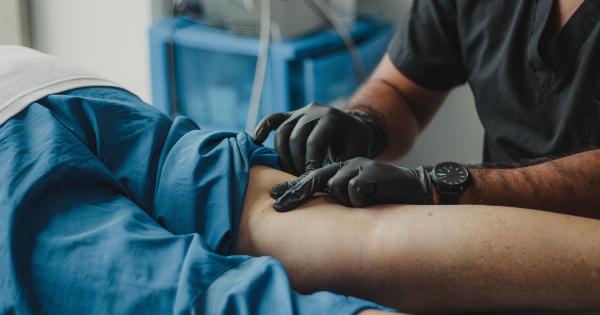Arthritis in the knee is a common condition that affects many people, particularly as they age. It is a condition that occurs due to wear and tear of the knee joint, leading to pain, stiffness, and inflammation.
In this article, we look at the warning signs of arthritis in the knee that you should watch out for and discuss what you can do to manage the condition.
What is Arthritis in the Knee?
The knee joint is made up of several parts, including bones, tendons, ligaments, and cartilage. The cartilage serves as a cushion between the bones and helps them move smoothly.
With arthritis, the cartilage starts to break down, leading to bone-on-bone contact when you move your knee. This can cause pain, swelling, and stiffness in the knee joint. Arthritis in the knee is commonly caused by wear and tear of the joint over time, but it can also be caused by an injury or infection.
Warning Signs of Arthritis in the Knee
Here are some of the common warning signs of arthritis in the knee:.
1. Pain and Stiffness
Pain and stiffness are the most common symptoms of arthritis in the knee. The pain may be mild or severe, and it may be felt in the knee joint or around the knee. The stiffness may be worse in the morning or after sitting for a long time.
2. Swelling
Arthritis in the knee can cause swelling around the knee joint. The swelling may be mild or severe, and it may come and go. In some cases, the knee may feel warm to the touch.
3. Limited Range of Motion
If you have arthritis in the knee, you may find that your range of motion is limited. You may have difficulty fully extending or bending your knee.
4. Crunching Sensation
Sometimes, arthritis in the knee can cause a crunching or grating sensation when you move your knee. This is caused by the bones rubbing against each other due to the lack of cartilage.
5. Weakness in the Knee
Arthritis in the knee can cause weakness in the knee joint. This can make it difficult to walk, climb stairs, or do other activities that involve your knees.
6. Instability
Arthritis in the knee can cause the knee joint to feel unstable or wobbly. This is because the damaged cartilage cannot support the joint properly.
7. Redness
In some cases, arthritis in the knee can cause the skin around the knee to become red and inflamed. This is a sign of inflammation and should be taken seriously.
8. Difficulty Sleeping
If you have arthritis in the knee, you may have difficulty getting comfortable at night. The pain, stiffness, and swelling in your knee may make it difficult to find a comfortable sleeping position.
9. Difficulty Standing Up from a Seated Position
If you have arthritis in the knee, you may find it difficult to stand up from a seated position. This is because the knee joint may be stiff and painful.
10. Pain That Persists
If you are experiencing persistent pain in your knee, even without any other symptoms, it is important to see a doctor. You may have arthritis in the knee or another underlying condition that needs to be treated.
How to Manage Arthritis in the Knee
If you have been diagnosed with arthritis in the knee, there are several things you can do to manage the condition:.
1. Stay Active
It is important to stay active, even if you have arthritis in the knee. Exercise can help improve your range of motion, reduce pain, and strengthen the muscles around the knee joint.
Low-impact exercises, such as walking, swimming, and cycling, are recommended.
2. Lose Weight
If you are overweight or obese, losing weight can help reduce the pressure on your knee joint and reduce pain and inflammation. Even a small amount of weight loss can make a significant difference.
3. Use Ice and Heat Therapy
Ice and heat therapy can help reduce pain and inflammation in the knee joint. Ice therapy is recommended for acute pain and swelling, while heat therapy is recommended for stiffness and chronic pain.
4. Take Medications as Directed
There are several medications that can help manage the pain and inflammation associated with arthritis in the knee.
These include over-the-counter pain relievers, such as acetaminophen and ibuprofen, as well as prescription medications, such as corticosteroids and anti-inflammatory drugs. It is important to take medications as directed by your doctor.
5. Use Assistive Devices
If you have arthritis in the knee, you may benefit from using assistive devices, such as crutches, a cane, or a knee brace. These devices can help reduce pressure on the knee joint and improve mobility.
6. Consider Surgery
If conservative treatments are not effective, surgery may be recommended. The most common surgery for arthritis in the knee is a total knee replacement, which involves replacing the damaged joint with an artificial one.
Conclusion
Arthritis in the knee is a common condition that can cause pain, stiffness, and inflammation in the knee joint. If you are experiencing any of the warning signs discussed above, it is important to see a doctor.
With proper management and treatment, you can reduce pain and improve your quality of life.


























